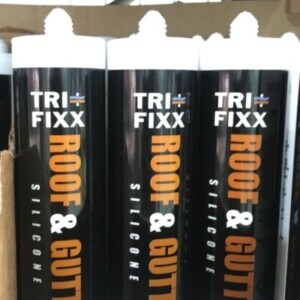There are several types of silicone products around but if you are working with sheetmetal, then we recommend that you use neutral cure silicones to achieve the best results in your work. Neutral cure silicones have many performance benefits. The most important of these is that it won’t cause metal corrosion. Other products containing acetoxy silicone release compounds as they cure which can corrode your metal work. If you can smell a vinegar type smell, then the silicone you are using is not a neutral cure silicone. Acetoxy silicone can also cause discoloring, and this has been known to happen when using it with polycarbonate sheet.
Other benefits of using a neutral cure silicone include:
- Odourless
- Minimal shrinkage
- Better waterproofing
- Sticks better to metal
- Does not require primer
- UV resistant
- Flexibility in joint movement
CURING
Curing occurs with atmospheric humidity – the more moisture in the air, the faster it will cure. Usually a skin will form with 5 minutes or so, but will take approximately 24 hours (or more) to fully set.

PAINTED SURFACES
If you are applying to a painted surface, neutral cure silicone will adhere to the paint but note, you won’t be able to reliably paint over a surface that has silicone on it. Bear this in mind when using the product and remove any silicone dropped on surfaces by wiping away with damp cloth with methylated spirit. You should also mask surfaces that you don’t want the silicone to make contact with.
AVAILABLE COLOURS
Neutral cure silicones come in a range of colors including clear, white, grey and black as well as a selection of Colorbond® colours, so you can usually find one that will complement your work.
ELECTRICAL CABLING
One thing to note is that the acidic characterics of acetoxy silicones can also cause corrosion to electrical cabling, so if you are working around electrical services, neutral cure is the best choice.
AUSTRALIAN STANDARDS
For information on Australian standards in roofing and cladding sealants, please refer to the SA HB39:2015 Installation code for metal roof and wall cladding.


